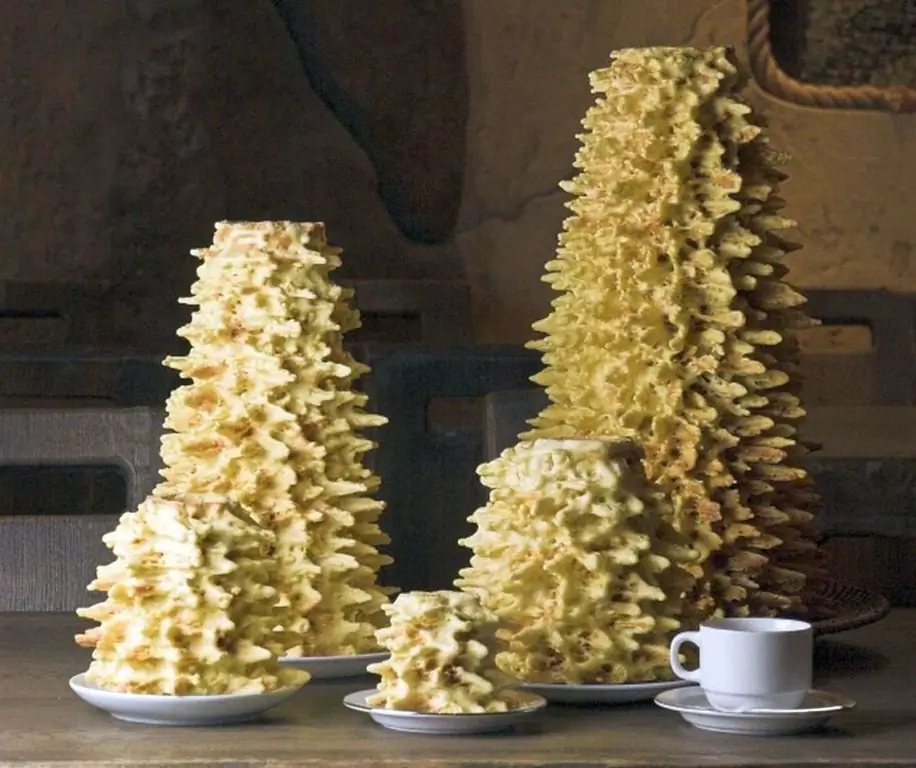2026 Author: Isabella Gilson | [email protected]. Last modified: 2025-01-23 12:50:34
Shakotis cake is a traditional Lithuanian and Polish dessert that has a very unusual shape. It is made from egg dough and baked on an open fire. It is usually prepared for a wedding or New Year. Literally translated from Lithuanian, the name means "branchy", which accurately describes the shape of the cake. This dessert is included in the Lithuanian National Culinary Heritage Fund.
Dessert Features

One of the main features of the "Shakotis" cake is that it is prepared with a lot of chicken eggs. From 30 to 50 pieces per kilogram of flour. At the same time, it is baked on a wooden skewer, which is dipped in dough and turned over an open fire. As a result, the dough drips and takes the form of numerous branches.
It resembles a whimsical yellow shortcrust pastry tree. A cut cake is very similar to a cut with characteristic annual rings. Existeven special ovens for baking this cake. The main thing is that the principle of making the Lithuanian cake "Šakotis" remains unchanged: while dripping and baking, the dough takes a very unusual shape. It is believed that the longer and thicker these "branches", the more talented the hostess who prepared it. On the Christmas table, such a cake looks especially attractive, as it looks like a New Year tree.
History

Such an unusual dessert, of course, must have its own story. It is believed that the Shakotis cake appeared in the 15th century. There are several versions of how it appeared, they all agree on only one thing: the first time it was cooked quite by accident.
The cake recipe "Shakotis" originated during the years of the Lithuanian-Polish union, and therefore became widespread in the two countries. According to one version, it was first baked by a young chef named Yozas. It was supposed to be a treat for Queen Barbara. As a reward for his invention, he received a rich decoration, which he presented to his beloved. Most likely, the chef turned out the Shakotis cake quite by accident when he spilled the tender dough on a skewer that was spinning over the fire.
According to another version, Yozas participated in a culinary competition hosted by Barbara. A grand feast was held in the castle in Trakai. The cook was in love with a beauty who refused all suitors. He decided to win the competition by all means, because the winner could ask for anything he wanted. He decided to give her a gift, hoping that in thiscase, the beauty's heart will melt.
Finding out that the queen loves sweets, he decided to make butter cookies for her with lots of eggs. Having prepared a rich dough, he baked beautiful cookies in the form of amazing flowers, covering them with multi-colored icing. But when he came to the feast, he saw that on the royal table there were a large number of various vases with cupcakes, cookies and chocolates of various shapes.
Then he decided to bake the dough right on the open fire. Jozas began pouring the mixture onto a red-hot iron spit, and it began to bake, forming intricate patterns. As a result, the cake-cookie turned into a branched spruce. Everyone was so delighted that the queen recognized "Shakotis" as a delicacy of the evening. For the victory, Jozas asked Barbara for a ring from her hand and a pearl necklace to present all this to his beloved. They say that amazed not only by his talent, but also by his disinterestedness, the queen attended his wedding. As a sign of gratitude, the culinary specialist came up with another dish dedicated to the ruler. Yozas called it "The Queen's Necklace" and made it from swan eggs. After this incident, "Šakotis" became her favorite delicacy and a must-have table decoration at all Lithuanian weddings.
Finally, there is the most prosaic version. According to her, the first mention of "Shakotis" is found in 1692 in the cook book of confectioners in the German city of Kiel. The need for an unusual dessert arose due to the fact that parishioners brought a large number of eggs to the temple on Easter.
The biggest "Shakotis"

The biggest Shakotis in history was made in 2008. Lithuanian confectioners spent about 1,200 eggs and 160 kilograms of dough on it.
As a result, "Shakotis" turned out to be two meters 30 centimeters high, and its weight was 73 kilograms and 800 grams.
For five hours, the three chefs tirelessly turned the skewer while their assistants, female bakers, poured in the dough.
Classic recipe
The classic Lithuanian cake recipe "Shakotis" is well known nowadays. In order to cook it, you will need to take:
- 50 chicken eggs;
- 1 kg 250 g butter;
- 1kg 250g wheat flour;
- 800g granulated sugar;
- 10g lemon essence;
- 6 cups 20% cream;
- 100 grams of cognac.
According to ancient traditions

If you follow the ancient traditions of your ancestors, then you need to cook "Shakotis" as follows.
Sugar and butter are ground until a homogeneous lush mass is formed, which must be thoroughly beaten. Gradually, chicken eggs are added to it (1-2 pieces each). Finally, flour is poured out, poured with cream, lemon essence and cognac.
The classic "Shakotis" is baked in a special oven. If there is none, then it will be possible to cook it in the most ordinary kitchen. We will tell you how to make a Shakotis cake at home in this article.
At home

In order to cook "Shakotis" at home, you will need exactly the same list of ingredients that was described in this material. Due to the fact that you will cook the cake not in a special oven, but in your own kitchen, the number of products will not change. Keep in mind that one cake is for 20 servings.
It is worth noting separately that the resulting dough should be yellow, liquid and tasty. On an industrial scale, this dessert is baked in special rooms at the bakery, where there are skewers that the confectioner pours with dough so that it flows down and hardens beautifully.
In Lithuania, they note that there is no special need to cook "Shakotis" at home, since you can easily buy such a cake at any grocery store. By the way, in this country, since Soviet times, it was customary to insert a bottle of champagne into a hole in the cake and go to a wedding or New Year's celebration with such a present.
But if you are still far from Lithuania, and you really want to try a unique royal dessert, we will tell you how you can make it in your kitchen.
Preparing the dough

To prepare the "Shakotis" cake at home, let's start with the preparation of the dough. Thoroughly rub the butter with sugar until a fluffy foam forms. Add a couple of eggs to the resulting mixture, continuing to beat it. After we send all the other ingredients there.
The dough should be liquid so that it is comfortable andeasy to pour on the skewer.
Ideally, dough should be watered on a special skewer, which rotates slowly. It is in the process of dripping dough that the cake takes on such a unique shape.
What can replace the skewer

According to the recipe for the Shakotis cake, at home there are several options for how this special skewer can be replaced. If the area and arrangement of the house allow and you have a fireplace, then you can arrange a special device near the source of the fire. Only in this case, you definitely need a pallet into which the dough will drain.
Another option that Lithuanian chefs advise to use is to reduce the amount of all ingredients by ten times and cook "Shakotis" in a conventional oven in your kitchen. To do this, the resulting dough must be poured into cupcake molds with a characteristic hole inside, without which "Shakotis" cannot be imagined. In this case, the cake is baked in an oven at a high temperature.
In Lithuania, as already mentioned, this cake is usually prepared for a wedding. In this case, it is believed that the higher the so-called tower of this dessert, the more love the newlyweds will have in their life together. So many couples even today compete with each other in the size and height of this national delicacy.
Now you know for sure that you simply must try "Shakotis". Therefore, if you are not ready for culinary experiments in your kitchen, be sure to go to any foodstore or pastry shop when you are in Lithuania to buy this amazingly delicious and very original looking dessert.
Analogues of "Shakotis"
It is interesting that in some European cuisines there are analogues of this amazing cake. For example, in Germany they prepare a special pastry known as baumkuchen.
The cut of this amazing cake also resembles a saw cut tree with characteristic annual rings, as mentioned earlier. Such an unusual effect can be achieved through a unique technology that involves the following: a special wooden roller is repeatedly dipped in batter, waiting for it to brown.
Recommended:
How to cook red borscht with beets: a step by step recipe with a description and photo, cooking features
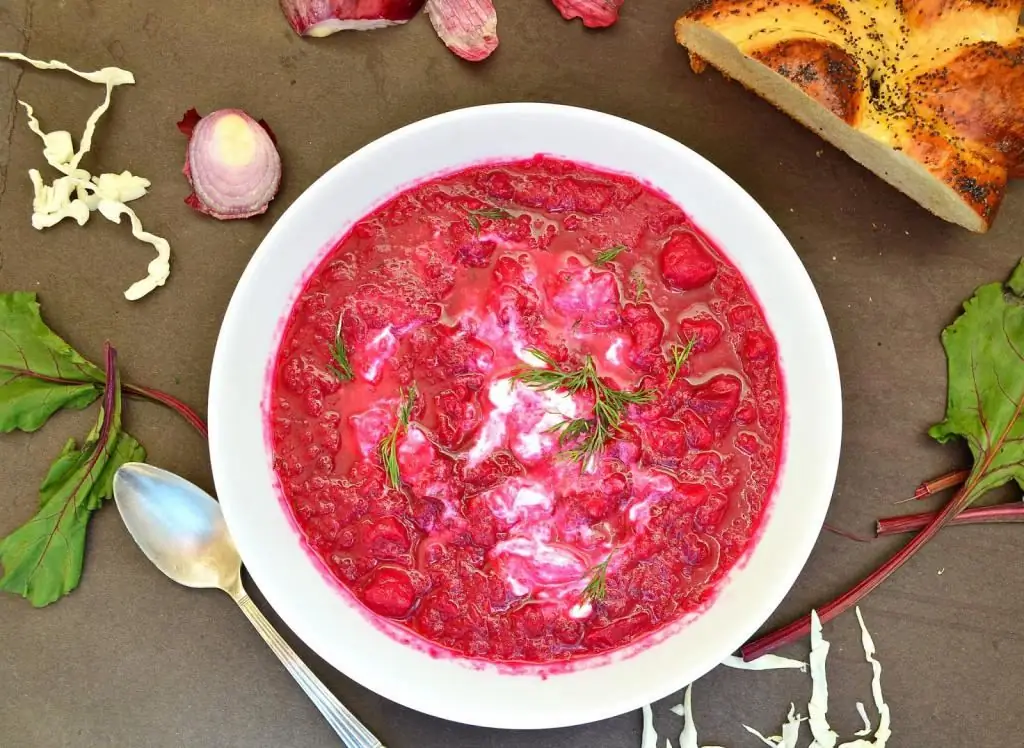
To make the borscht tasty and rich, you will have to work hard. But all efforts will pay off very quickly. After all, the main charm of this dish, unlike other soups, is the ability to enjoy a fragrant hearty dinner for a few more days after its preparation. A real find for any hostess. And how to cook red borscht with beets? Here are some simple and affordable recipes
Asian salad: step by step recipe with description and photo, cooking features
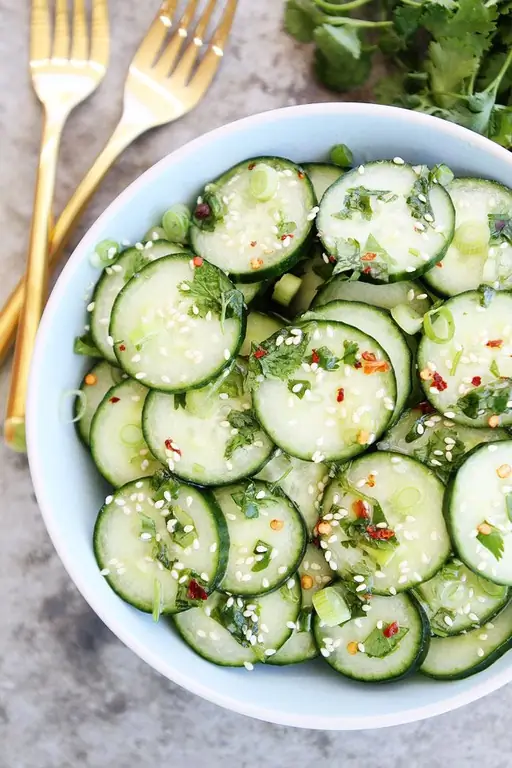
Asian cuisine is a clear example of how you can create real works of art from simple ingredients. Opening your refrigerator, a chef with oriental roots will prepare a dozen salads that will differ in appearance and taste. Recipes for popular Asian-style salads are presented below
Secrets of cooking borscht: a step-by-step recipe with a description and a photo, cooking features
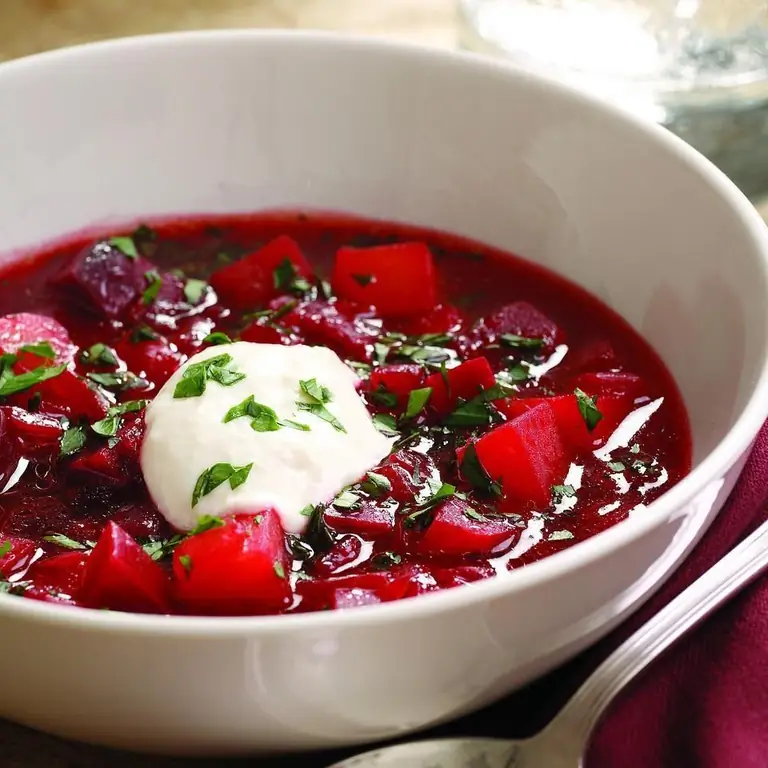
This hearty and appetizing dish is loved by everyone: both adults and children. Each family keeps its signature secrets of making delicious borscht, passing them from generation to generation. In our article, we will talk about how to cook this first dish so that the saucepan with it invariably becomes empty long before the end of the weekend
Bread spread: step by step recipe with description and photo, cooking features

Bread spreads are a great opportunity to diversify your diet, as well as refresh yourself when breakfast has already been, and it is still far from lunch. Since the mixtures are supposed to be applied in a thin layer, even fatty ingredients will not harm the figure, because their calorie content will be very low. The article contains the most delicious options for making spreads with a detailed description of the process. Such sandwich bases will appeal to even the most sophisticated gourmets
Salad from "Doshirak": a step-by-step recipe with a description and a photo, the necessary ingredients, cooking features
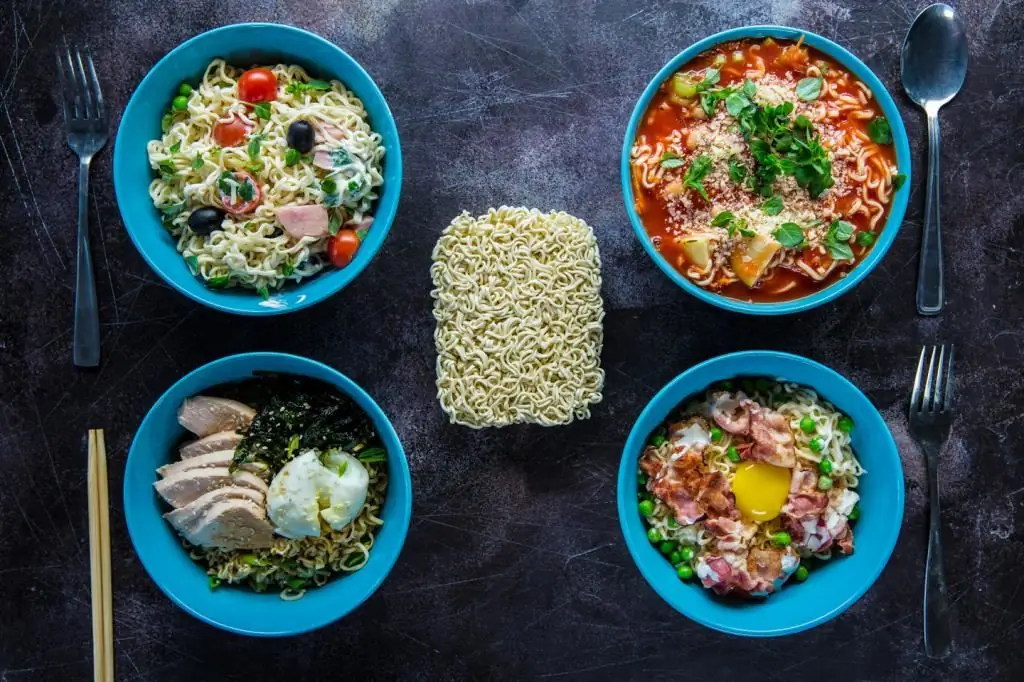
With the advent of various products on the shelves, housewives began to come up with more and more unusual recipes and unforeseen combinations. One of them is a salad from the "beach package". What are the options for preparing this original snack? What can you combine dry instant noodles with? What different delicious salads can be made by adding a regular, ordinary "beach pack" to them? Are there any combination restrictions? You will learn about this and much more from our article

